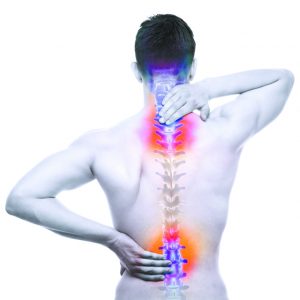 The core muscles of our bodies support our entire frame, from our head and neck to our lower back and legs. The abdominal muscles are heavily relied upon to carry our weight and fluctuate with our daily movement and activities. If our core muscles are weak, then the spinal column can be adversely affected, because the back muscles will be required to support the spine and legs, which can wreak havoc on the back muscles by putting them into overload.
The core muscles of our bodies support our entire frame, from our head and neck to our lower back and legs. The abdominal muscles are heavily relied upon to carry our weight and fluctuate with our daily movement and activities. If our core muscles are weak, then the spinal column can be adversely affected, because the back muscles will be required to support the spine and legs, which can wreak havoc on the back muscles by putting them into overload.
For active individuals that enjoy sports like tennis, pickleball, golf, and bowling, these types of activities put some strain on our lumbar spines. In most cases, this is good, as it strengthens the back muscles, but if you happen to have a weaker core, you may be at risk of injuring your lower back. Consequently, disorders like Sciatica can often be alleviated or lessened with the proper exercises, stretching and core strength training.
The core is made up of internal and external obliques and transverse abdominals that make up our entire torso. These are relatively large muscle groups, so the best way to train them is by doing a variety of exercises that work all aspects of the abdomen.
Crunches and sit-ups are good, but they are not the only way to build up core strength. Planks are incredibly effective because they strength train the transverse muscles and with side movements, they engage the oblique’s as well. Many exercises can be done with low-impact on the floor, like sitting on your bottom and doing bicycle movements with your legs; add in a twist like your pulling a rope and voila! You’re strengthening your abs.
It’s not about getting a six-pack, it’s about your overall wellness, but inevitably your core will start to look more defined if you make abdominal exercise a part of your weekly plan. Three to four days of core work is sufficient for most people, but it’s always important to speak with your physician about incorporating any new exercise program into your routine.
Core strengthening might not always alleviate all of your back pain, depending on your vertebral health, but it will rarely ever be a bad idea to add stretching and exercising into your life. If you or a loved one is experiencing back pain, please see your physician immediately to get the root of your issue and develop a plan to get you back in the game.
Daryoush Payman, M.D.
Dr. Daryoush “Darius” Sabet-Payman has been treating patients with acute and chronic low pain back pain for over 17 years.
Dr. Payman performed his residency training at The George Washington University in Washington D.C. After graduating from
Dr. Payman performed his residency training at The George Washington University in Washington D.C. After graduating from the George Washington University, Dr. Payman Scored in the Top One Percent in the nation on the American Board of Anesthesiology Board Exam. During the following years, he spent his time helping patients return to their lives, pain-free, and happy, by utilizing the most state of the art interventional techniques.
Dr. Payman shares the philosophy of trying to achieve results by identifying the cause of low back pain, neck pain, and arthritis of the joints. He then plans an interventional approach unique to each individual patient tailored to addressing the source of the lower back pain. He specializes in Anesthesiology and Interventional Pain Management, where a solution to the problem is approached with procedures to tackle the root of the pain, not just to mask the symptoms with narcotics.
Spine Intervention Specialists, P.A.
(352) 391-1750
201 W Guava St #202, Lady Lake, FL 32159
Check Also
Recurrent UTIs: Addressing the Risk of Antibiotic Resistance
Urinary tract infections (UTIs) are common bacterial infections that affect millions of individuals worldwide each …
 Central Florida Health and Wellness Magazine Health and Wellness Articles of the Villages
Central Florida Health and Wellness Magazine Health and Wellness Articles of the Villages



